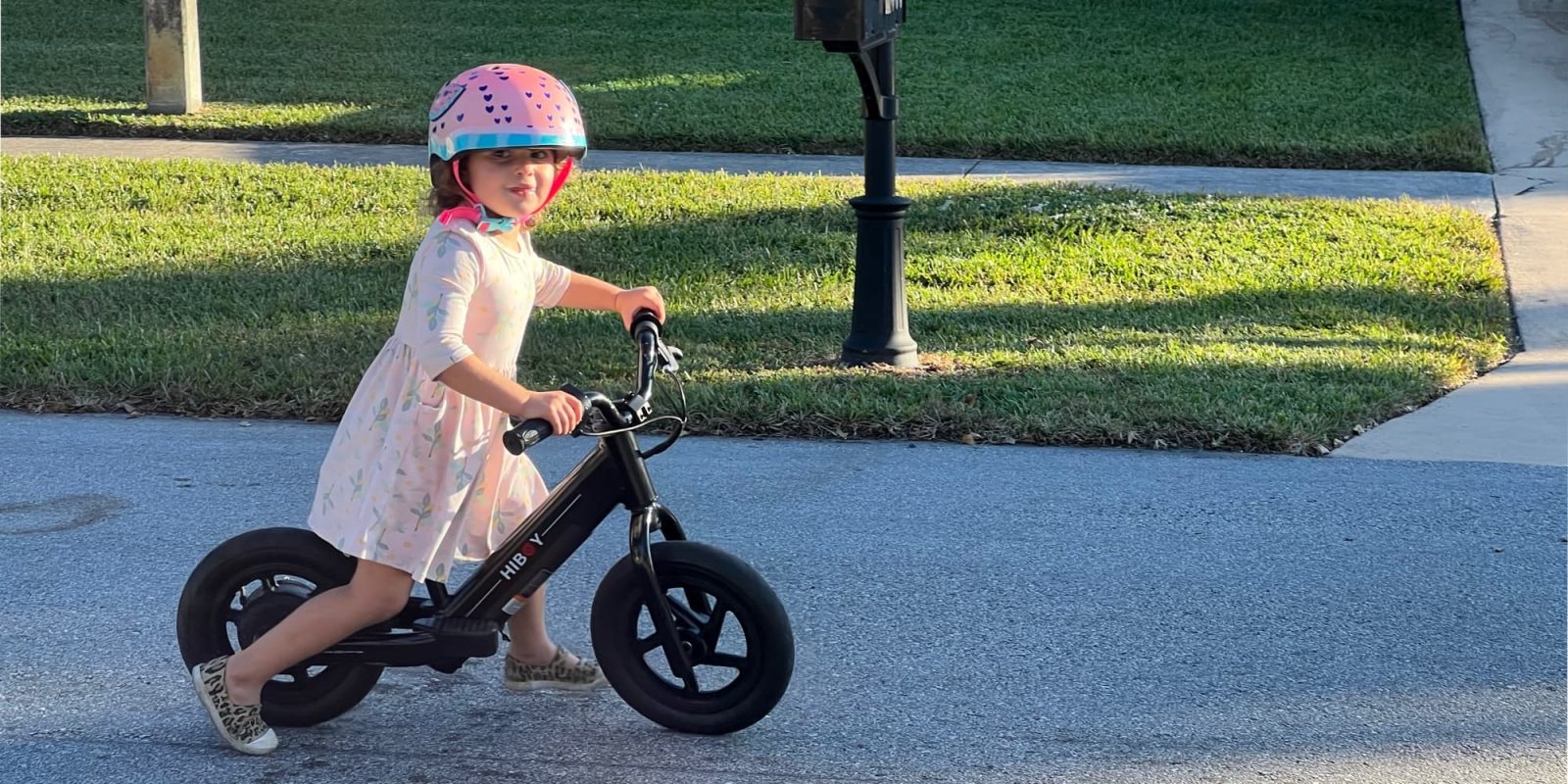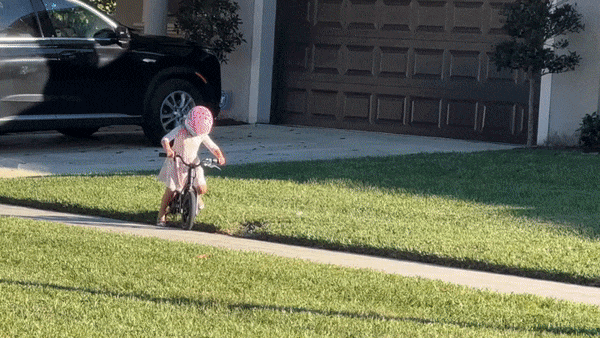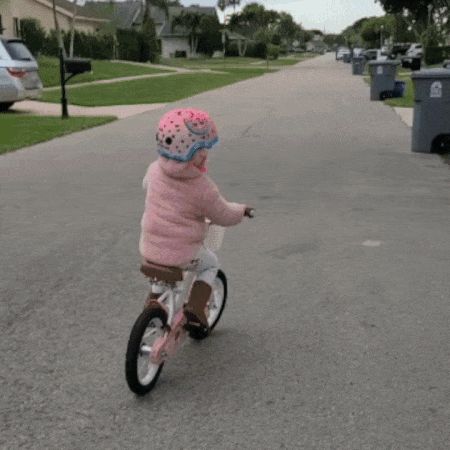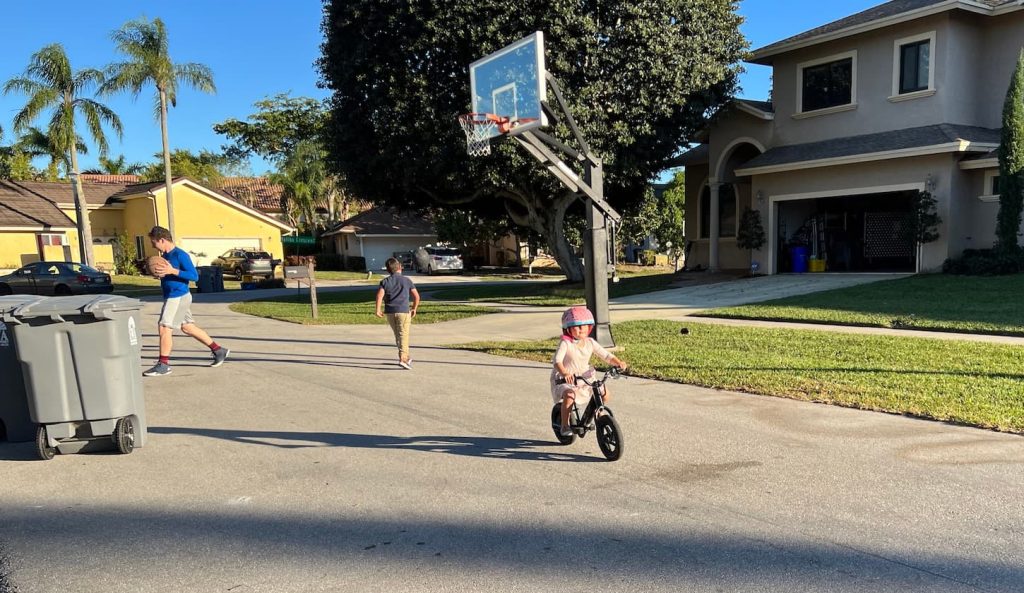
A recent string of anti-e-bike articles in the New York Times has attempted to spread fear around the increasingly popular transportation method of electric bicycles. But it’s not just the typical e-bikes you see students riding to class or adults cruising to work on. One of the main e-bike targets of late has become electric balance bikes, or what the NYT referred to as “motorcycles for children.”
However, instead of fearing these rider training tools, we’d be better advised to embrace them and encourage more parents to put their kids on one.
The main bike at issue in the recent NYT hit-piece was a model named the “K1D,” or kid. It’s produced by California-based electric bike manufacturer SUPER73 and is the company’s first two-wheeler specifically designed for children.
It’s not a new concept though. Let’s be honest: SUPER73 basically looked at the massive amount of money another company known as StaCyc was making selling electric balance bikes and said, “We can do that too, only cooler.” And they did.

For those unfamiliar, balance bikes are essentially tiny bikes for small children. There are no pedals, so kids push off against the ground and then rest their feet on the platforms. The aptly named balance bikes teach kids how to balance a bike by developing the intuition to slightly steer to the side they are leaning toward. Until they get it and balance on their own, they can just put their feet back down.
It’s the modern-day alternative to how your dad used to push you on your bike in a grassy field while yelling, “Now pedal! And turn! TURN!” before running after you as you fell, then watched as you get back up to try again. Except instead of falling, kids now just put their feet down and push off again. In fact, children are learning to control a bike without even realizing they’re learning. To them, it’s just fun to push and glide.
Balance bikes are replacing training wheels as the go-to method for learning to ride a bike. Unlike training wheels, which don’t teach how to balance and only make kids reliant on something else to balance for them, these types of balance bikes teach kids to be reliant on themselves to stay up. Balance bikes are not only safer (fewer falls), but kids actually learn on their own by discovering what works. They feel what steering inputs make the bike more stable, then learn to repeat it, all by themselves.
Balance bikes have been around for a while, but electric balance bikes are fairly new. They’re basically the same thing, except they have a tiny electric motor and battery added on to the frame. Kids still have to push off to get going, but instead of slowing down and stopping after a few seconds, they can push a button or twist a throttle to engage the motor and keep going. It’s more fun for the kid (obviously, “vroom vroom”), and it actually helps them learn to ride a bike faster because they spend more time upright and balancing, developing the muscle memory and neural pathways needed to steer and balance a bicycle.
My wife and I are enjoying playing life on easy mode without kids, so from time to time we borrow our nieces and nephews whenever we feel like experimenting. I recently got a hold of an electric balance bike from Hiboy and put my 4-year-old niece on it. Time to experiment.

She already has a small pedal bike with training wheels, but my brother hasn’t been able to remove them yet because she doesn’t know how to balance the bike without the training wheels. They try, but it just proves frustrating and she gives up. Each time I saw those damn training wheels, I wanted to take them off, but I couldn’t since she’d just fall over.
To my niece, the electric balance bike was immediately “cool.” She’s seen her older brothers ride electric scooters, and so she naturally wanted to try her own electric ridable thing.
We left the power off at first and she practiced rolling downhill on her driveway, learning to balance on the way down.
After a few tries, she was getting the hang of it. Then we turned the power on. And something amazing happened. She reached the bottom of the driveway, pushed the throttle, and just kept going.
She was a bit wobbly, like a small drunk person struggling to ride home from an Amsterdam bar, but she was rolling on two wheels. After a few more minutes, she was doing it! She was actually riding and balancing all on her own.

But that’s not the end of the story. Because to continue the experiment, we next took the training wheels back off her pedal bike to see what would happen.
And she immediately succeeded to ride her pedal bicycle, something she had never been able to do before. Literally just a few minutes on an electric balance bike did what months of training wheels couldn’t: It taught her to ride a bike.
Of course, anecdotal evidence is merely evidence of an anecdote, but I don’t think my niece is anything special. She’s rather ordinary (and also loud… oh so loud! Hanging out with small children is the best birth control in the world). But it still goes to show just how powerful of a learning tool electric balance bikes can be.
They’re essentially a way to Trojan horse bike-riding skills into kids. It’s the same idea of hiding math problems in educational video games. You take something inherently fun for kids, and you sneak important skills and lessons into it. It’s a win-win.
With these new-fangled contraptions of electric balance bikes, the kids still get exercise (you have to push off to get going before the motor will activate), and they get more fresh air from outdoor time.
At a time when childhood obesity rates are at depressingly high levels, we should be doing everything we can to get kids away from screens and onto bike saddles. If an electric balance bike, something that critics like to refer to as “motorcycles for children,” are cool enough to get kids interested in going outside and learning to ride, then we need more of them. Hell, include little leather vests that say “Heck’s Angels” to go with them, I don’t care. If a few Pulitzer Prize-winning NYT journalists need to get their feathers ruffled in order for scores of young kids to more quickly learn to ride bikes, that’s a price I’m willing to pay.
Just make more of these fun tools and get more kids on them. We need more kids learning to ride, more quickly and in larger numbers.

The obvious counterargument here is “But they aren’t pedaling so they’re just being lazy.” But stick with me here. Again, you’ve got to push off before you can engage the motor, so there’s some physical activity required. And balancing engages your core and other muscles too. But also, keep in mind that exercise isn’t the point at this stage. We’re talking about toddlers. If they aren’t sleeping, they’re either running or being annoying (both of which burn calories). And they’re going to outgrow these tiny electric balance bikes quickly anyway. If they can fit on it for a year, you’ll be lucky. By the time they’ve outgrown it, put them on a pedal bike. They’ll enjoy the new larger bike with a fun new propulsion method and will feel like a “big kid” on their new pedal bike, which they are instantly good at riding, thanks to honing their balance skills from an earlier age on an electric balance bike.
Top comment by tanker
In many countries around the world, cycling and traffic laws are part of ANNUAL curriculum required in schools from grade schools through high school.
Cycling should be like a life long/saving skill that everyone should know, like swimming.. or maybe even math.
For most parts of the world, bicycles and other 2-wheel vehicles outnumber cars & truck.
In America, most drivers think bicycles & motorcycles don't belong on public roads, which is a mentality that's been imbedded across decades of car culture and cheap oil in America.
Public roads are not just for cars & trucks, bicycles & others have just as much right to be using public roads as cars & trucks.
People need to be educated the danger to themselves and others when they operate their bike, ebikes, e-scooter, e-mopeds on public roads.
We have to acknowledge the reality & facts: regardless of laws & rules, people will always want to ride fast will always find a way to modify or upgrade their bikes to go faster than manufactured.
But at least when they are educated of the danger they present to themselves & others, maybe they would re-evaluate before taking too much risk while riding.
Meanwhile, I still think parents should also be held accountable when their child is caught breaking traffic laws, causing accidents on high-seed e-bikes.
If they can afford high cost, high speed e-bikes to for their children, they can also afford higher (x5 or x10) auto insurance premiums.
Luddites that fear electric motors can and likely will continue to hold these things up as two-wheeled boogeymen that are coming for your kids, but I say let them come for your kids. Because if electric balance bikes are this quick as a learning tool to teach kids an important life skill of riding a bike and in a way that is more effective and more fun for the kids, then they’re obviously doing something very right.
Anything that encourages kids to get outside, get on a bike, or just go be kids away from screens is a good thing.
Of course that doesn’t mean that there shouldn’t be adult supervision. Electric balance bikes are effective tools for teaching kids bike balance skills, but adults should still be watching those kids to make sure they’re safe during that learning process. An orange flag wouldn’t be a bad idea either. But I’d argue that the process is even safer since kids can more quickly learn the balance part and then move on to more critical safety lessons like learning to check for cars before entering the street, etc.
The NYT can try to scare parents away from electric balance bikes for kids, but perhaps fear-mongering news isn’t where we should be getting our cycling advice. The NYT makes money when people click on their articles, and a headline “Nothing wrong with effective cycling learning tool” doesn’t carry the same clickability. As a journalist who also only makes money when you read my articles, I’m going to take that risk. I probably won’t earn very much today, so I’ll just skip my millennial avocado toast until tomorrow. But that’s a small sacrifice to pay for helping a few more kids learn to ride a bike.

FTC: We use income earning auto affiliate links. More.




Comments